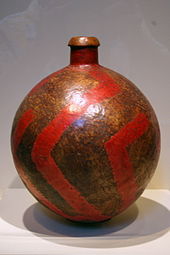
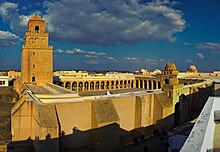
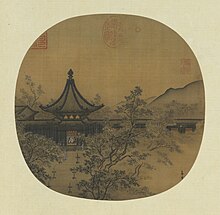
Art Part 5: Legendary Artists and the Meaning of Art
This series on art has taught me on many things on the beauty and wonder of art. Every time you look at the diversity of the works of art, you vividly witness fully proportion, creativity, colorful images, rhythm, and scale. I have learned so much about the exquisite history, the inspiring culture, and the diversity as it relates to art too. One of the great functions about art is that it focuses heavily on uniqueness plus fluidity. In other words, art can be simplistic or complex in its basic formulations. For thousands of years, art has motivated our interests, developed our officiousness (or our investigative spirit), and expanded our originality. It has been on the forefront of human expression and the wide array of social movements. For example, the paintings of ancient Egypt, the megaliths of Stonehenge, the bronze statues of ancient Nigeria, the glorious paintings of the Harlem Renaissance, and the Impressionist works outline the best of human artistic displays. Museums worldwide give the public an in-depth outpouring of the greatness of human imagery. From graffiti to architecture, no one can deny the cultural significance of art. Genius existed among artists spanning numerous millennia. Leonardo da Vinci used exquisite minutia to outline his drawings, and paintings. Augusta Savage was a great black woman who formulated sculptures with magnificent expertise and stunning detail. So, we acknowledge not only the famous legends of art. We also honor unsung artists who work without fanfare. They have exhibited genius and exceptional talent as well. On many occasions, tons of unsung artists haven’t received their due credit, but artists (who aren’t well known) ought to be respected for their talents, sacrifice, and other inspirational qualities as well. Now, this work will greatly expound on some of the greatest artists in human history along with delving into the quest of finding the meaning of art in general.

Meta Vaux Warrick Fuller
She was a genius and a trailblazer in art. Sister Meta Vaux Warrick Fuller lived from June 9, 1877 to March 18, 1968. Philadelphia, Pennsylvania was the place of her birth and she could not only paint. She could sculpt and write poetry magnificently as well. Of her generation, her imagination was incredible and she was a protégé of Augusta Rodin. A celebration of Afrocentric themes consisted of her displays too. She worked hard every day of her life. She was an excellent sculptor in Paris too. She is famous for creating the sculpture of Mary Turner. Mary Turner was the young, married, and pregnant black woman who was lynched in 1918. This was a day after Mary Turner protested the lynching of her husband. Warrick made classics before the Harlem Renaissance too. Her parents were leading people of the African American community. Warrick was trained in art, music, dance, and horseback riding. She won a scholarship to the School of Industrial Art (PMSIA or the University of the Arts College of Art and Design today) back in 1894. She lived in Paris, France by 1899 to study art. She experienced racial discrimination at the American Women’s Club, but she continued to make excellent works. She made sculptors and revolutionary imagines. She was a friend and confidant of the late African American sociologist W.E.B. DuBois. DuBois encouraged her including French sculptor Auguste Rodin. She the first African-American woman to receive a U.S. government commission and she created a series of tableaux depicting African-American historical events for the Jamestown Tercentennial Exposition, held in Norfolk, Virginia in 1907. The display included fourteen dioramas and 130 painted plaster figures depicting scenes such as slaves arriving in Virginia in 1617 and the home lives of black peoples. She married Dr. Solomon Carter Fuller back in 1907. She lived to be 90 by passing away in March 18, 1968. Now, people know about her and respect the essence of her journey.
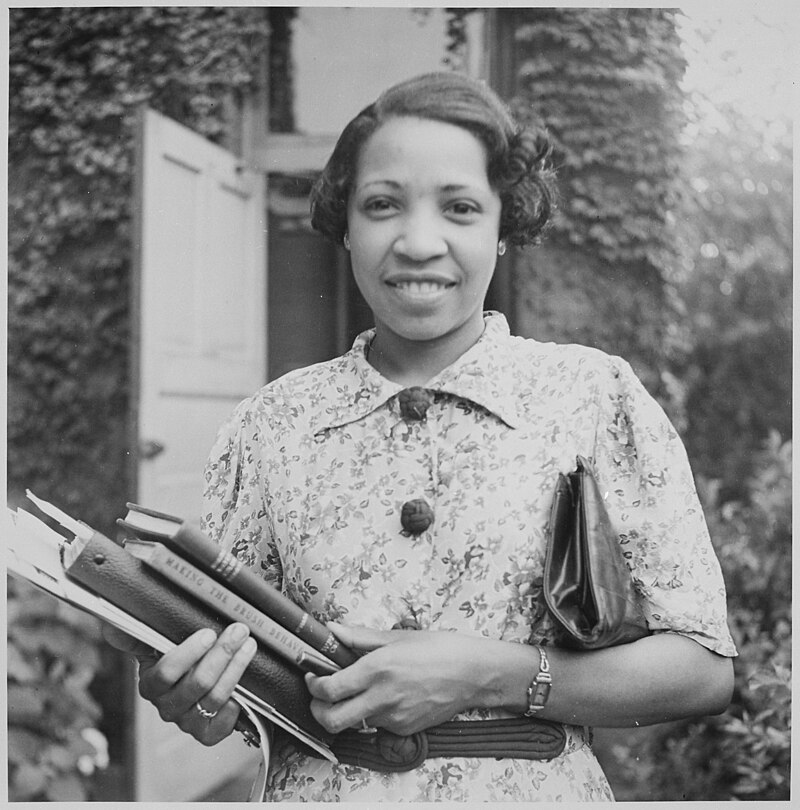
Lois Mailou Jones
One of the most underrated artists of the 20th century was Sister Lois Mailou Jones. She lived a long time on this Earth in 92 years from November 3, 1905 to June 9, 1998. She was born in Boston, Massachusetts. She was a great artist and a great teacher. She lived as an expatriate in Paris during the 1930’s and the 1940’s. The Caribbean and the Motherland of Africa inspired her art creations as well. She painted classic works and was influenced by the historic Harlem Renaissance. Traveling internationally, she worked hard to formulate designs, paintings, illustrations, and blessed academia with her exceptional talent. Her parents encouraged her to draw and paint watercolors. She met sculptor Meta Warrick Fuller, composer Harry T. Burleigh, and novelist Dorothy West who inspired her. She took classes from the Boston Museum of Fine Arts via an annual scholarship. She apprenticed in costume design with Grace Ripley. She researched African masks and created costume designs for Denisahawn. She took classes throughout her life. She took classes on different cultural masks at Columbia University. By 1945, she received a BA in art education from Howard University, graduating magna cum laude. She produced works to the time of her passing in 1998. She evolved in her style multiple times. She traveled into Europe, Africa, and the Caribbean. She wanted to be known as an American painter with no labels. She loved her African roots and American heritage. In 1928, she was hired by Charlotte Hawkins Brown after some initial reservations, and subsequently founded the art department at Palmer Memorial Institute in North Carolina. As a prep school teacher, she coached a basketball team, taught folk dancing, and played the piano for church services. In 1930, she was recruited by James Vernon Herring to join the art department at Howard University in Washington, D.C. Jones remained as professor of design and watercolor painting until her retirement in 1977.
She prepared her students to the real world involving art and design. She was a great mentor and strong advocate for African-American art and artists. In her works Negro Youth and Ascent of Ethiopia, the influence of African masks are seen in the profiles of the faces. The chiseled structures and shading renderings mimic three-dimensional masks that Jones studied. She loved the art works from Harlem Renaissance artist Aaron Douglas. She made over 30 watercolors in Paris. She studied at the Academie Julian in Paris. The French loved her talent. She also taught watercolor painting classes in Howard University. She worked with Céline Marie Tabary in painting and traveled to the south France. They taught art together in the 1940’s at Howard University as well. In 1952, the book Loïs Mailou Jones: Peintures 1937–1951 was published, reproducing more than one hundred of her art pieces completed in France. At the Barnett-Aden Gallery, Jones exhibited with a group of prominent black artists, such as Jacob Lawrence and Alma Thomas. These artists and others were known as the "Little Paris Group.” She married the Haitian artist Louis Vergiaud Pierre-Noel. They were students at Columbia University. They married in 1953 at the south of France. They visited Haiti a lot which influenced her art works. She taught in Haiti too. She visited Africa and protested racism and the Vietnam War on May 22, 1970. She painted greatly in the 1990’s. Her work is found in museums worldwide. Howard University hosted the exhibition Remembering Lois and she was buried on Martha’s Vineyard in the Oak Bluffs Cemetery. She broke down many barriers and was one of the greatest artists in history. We salute her spirit and contributions to art in general.
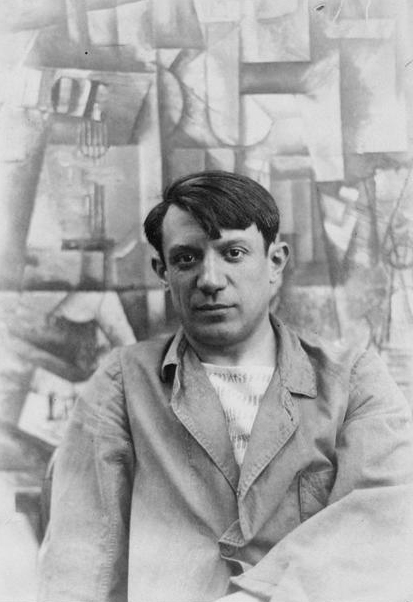
Pablo Picasso
Pablo Picasso made dynamic imagery. He was a Spanish painter, sculptor, printmaker, ceramicist, stage designer, poet, and playwright. He was born in Spain and lived much of his adult life in France. He lived to the year of 1973 being 91 years old. He co-founded the Cubist movement and he was one of the most influential artists in history. He was also a co-inventor of the collage for many styles. He is famous for the proto-Cubist Les Demoiselles d'Avignon (1907), and Guernica (1937), a dramatic portrayal of the bombing of Guernica by the German and Italian air forces. The bombing happened during the Spanish Civil War, which was about the Republican forces battling against the fascist forces in Spain. His life has gone through many phases and he has universal respect for his contributions to the essence of art in general. Not to mention that he was influenced by African art. He saw African artifacts and was inspired to develop his African influenced works from 1907 to 1909.
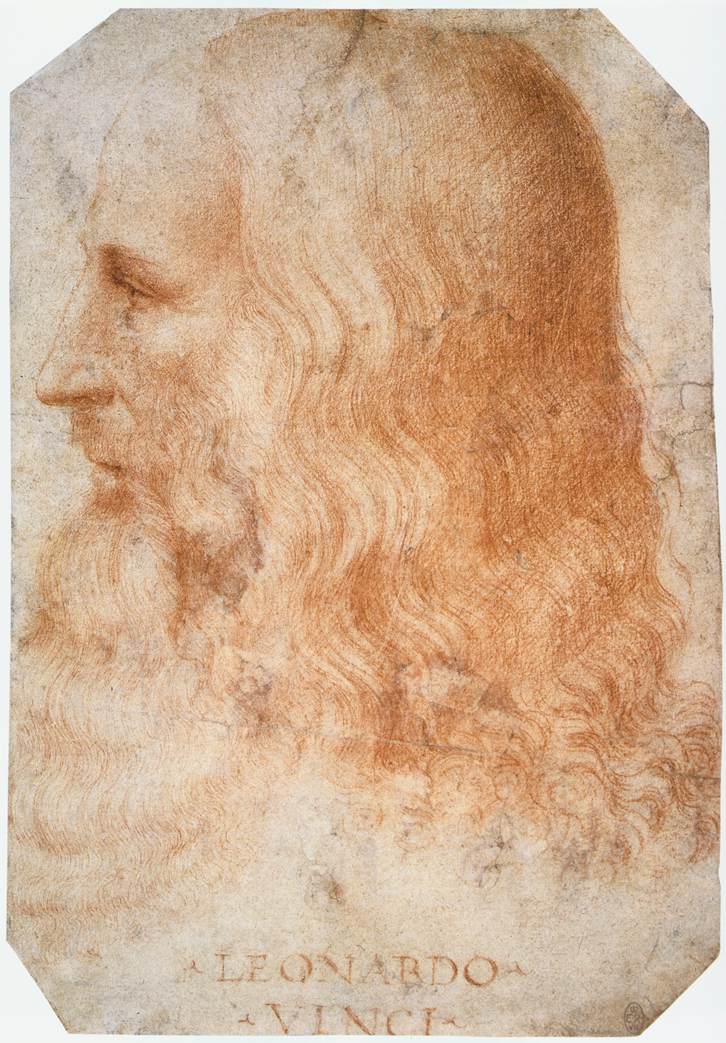

Leonardo da Vinci
Leonardo da Vinci was an Italian polymath who studied paintings, inventions, science, architecture, music, mathematics, engineering, literature, anatomy, geology, astronomy, botany, writing, history, and cartography. He is considered an innovator of paleontology and architecture. He was one of the greatest painters of all time. From the Mona Lisa, the Last Supper, etc., he influenced the scale of art in a wide scale. He represented the Renaissance humanist ideal. He drew plans for a tank, a parachute, and a helicopter. Throughout his life, he had a powerful sense of curiosity and imagination. He made 13,000 pages of notes and drawings. He made observations of the world that he saw. Most of Leonardo's writings are in mirror-image cursive. While secrecy is often suggested as the reason for this style of writing, it may have been more of a practical expediency. Since Leonardo wrote with his left hand, it was probably easier for him to write from right to left. These notebooks—originally loose papers of different types and sizes, distributed by friends after his death—have found their way into major collections such as the Royal Library at Windsor Castle, the Louvre, the Biblioteca Nacional de España, the Victoria and Albert Museum, the Biblioteca Ambrosiana in Milan, which holds the twelve-volume Codex Atlanticus, and British Library in London, which has put a selection from the Codex Arundel (BL Arundel MS 263) online. The Codex Leicester is the only major scientific work of Leonardo in private hands; it is owned by Bill Gates and is displayed once a year in different cities around the world.
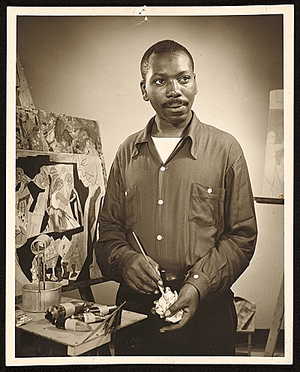
Jacob Lawrence
A genius in portraying African American life, the painter Jacob Lawrence was a story teller involving art. He called his style, “dynamic cubism.” He was influenced by the surroundings of Harlem to honesty describe his works. He was born in Atlantic City, New Jersey. He used vivid colors and taught for 15 years as professor at the University of Washington in Seattle. He was one of the greatest artists of history. He was prominent as a legend of the 20th century. He depicted the Great Migration in great detail. Lawrence's works are in the permanent collections of numerous museums, including the Philadelphia Museum of Art, the Museum of Modern Art, the Whitney Museum, the Phillips Collection, Metropolitan Museum of Art, the Brooklyn Museum, and the Reynolda House Museum of American Art. He is widely known for his modernist illustrations of everyday life as well as epic narratives of African American history and historical figures. Augusta Savage helped Lawrence to get a scholarship to the American Artists School. He married the painter Gwendolyn Knight, who was also a student of Augusta Savage. He lived to be 82 and passed away in 2000. He made paintings of the journey of the African American pioneer George Washington Bush.
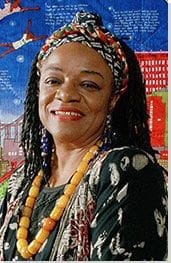
Faith Ringgold
Faith Ringgold is 82 years old and she was born in Harlem, NYC. She is known for painting and creating textile arts too. Known for making great quilts, she is also known for creating sculptures, paintings, and children’s books. Her mother was a storyteller and a fashion designer. Her creative spirit grew. Ringgold lived next to Duke Ellington and Langston Hughes during her childhood. She traveled into Paris, Florence, and Rome to study art. She also visited the Louvre and other museums. She is known for making a diverse amount of artwork. She traveled into West Africa in 1976 and 1977 that influenced her to develop mask making, doll painting, and sculptures. She taught in the New York City Public school system and at the college level. By 1973, she developed art full time. Ringgold began her painting career in the 1950's after receiving her degree. She took inspiration from the writings of Baldwin and Amiri Baraka, African art, Impressionism, and Cubism to create the works that she has made during the 1960's. Her early work is composed with flat figures and shapes. Though she received a great deal of attention with these images, galleries and collectors were uncomfortable with them and she sold very little work.This is because many of her early paintings focused on the underlying racism in everyday activities. These works were also politically based and reflected her experiences growing up during the Harlem Renaissance. These themes grew into maturity during the Civil Rights Movement and Women’s movement. She made political work in her American People Series of 1963. It portrays the American lifestyle in relation to the Civil Rights Movement and illustrates these racial interactions from a woman’s point of view. This collection asks the question “why?” about some basic racial issues in American society. Oil paintings like For Members Only, Neighbors, Watching and Waiting, and The Civil Rights Triangle also embody these themes. She wants people to know more about artists of color. She always has promoted black feminism and justice for people. She continues to fight the good fight.
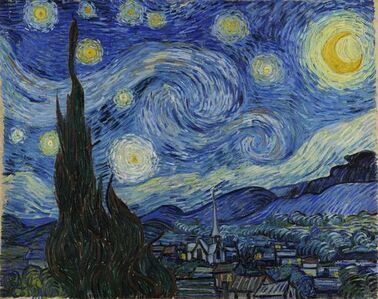
Vincent van Gogh
Vincent Willem van Gogh was a Dutch Post-Impressionist painter. He was one of the influential leaders of Western art. He worked hard in creating about 2,100 pieces of art including 860 oil paintings. Most of these paintings were created in the last two years of his life. He lived from 1853 to 1890. He was born in the Netherlands and his father was a Dutch Reformed Church minister. Many of his works include landscapes, still lifes, portraits, and self-portraits. Many dramatic colors are found in his art. His brushwork was extensive. He was a quiet and thoughtful man. He suffered depression very early. He became religious and was a Protestant missionary in southern Belgium. Van Gogh’s works deal with everyday life, pain, religion, and other subjects. When he arrived in France, he experienced a breakthrough. In Arles, he made 200 paintings and more than 100 drawings plus watercolors. He wanted a gallery to display his work, and started a series of paintings that eventually included Van Gogh's Chair (1888), Bedroom in Arles (1888), The Night Café (1888), Café Terrace at Night (September 1888), Starry Night Over the Rhone (1888), and Still Life: Vase with Twelve Sunflowers (1888), all intended for the decoration for the Yellow House. There is no need to sugarcoat his life. Poverty and mental health issues were a part of his life. He drank heavily and had fits of rage and anger. Van Gogh communicated with his brother Theo with letters. Theo van Gogh was an art dealer. He unfortunately passed away by suicide with a gun. His contributions were widely known and appreciated after his passing. Van Gogh knew how to use detail in his art and he was known to make numerous self-portraits of himself. He was a genius and his life shows how important art is and how vital help to those, who experience mental health issues, is needed in our world.
Dorothea Lange
One of the greatest photographers of American history was Dorothea Lange. She lived from May 26, 1895 to October 11, 1965. She documented many aspects of American society and she was born in Hoboken, New Jersey. She is well known to have shown pictures during the Depression era. She worked for the FSA or the Farm Security Administration. She contributed heavily to humanizing people who experienced the Great Depression including the development of the documentary photography. Her ancestors were German immigrants. She survived polio too. She was educated in photography at Columbia University in New York City (a class taught by Clarence H. White). She worked in studios in New York including those of the famed Arnold Genthe. She ended up working in San Francisco too. In 1920, she married the noted western painter Maynard Dixon, with whom she had two sons, Daniel, born in 1925, and John, born in 1930. Her work in showing the lives of people during the Great Depression inspired society to move forward. Her Migrant Mother photography from 1936 was iconic. She pictured Japanese Americans before and during the internment of innocent Japanese Americans during the World War II era. She lived for 70 years. She had many grandchildren and great grandchildren too. The Museum of Modern Art in New York showed a retrospective show of her work which Lange helped to curate. In 2003 Lange was inducted into the National Women's Hall of Fame. In 2006 an elementary school was named in her honor in Nipomo, California, near the site where she photographed Migrant Mother. In 2008 she was inducted into the California Hall of Fame, located at The California Museum for History, Women and the Arts. Her son Daniel Dixon accepted the honor in her place. She was a legend and a great artist.

Frida Kahlo
Frida Kahlo was one of the greatest, creative artists in history. She was a Mexican artist who loved self-portraits and works in showing nature and artifacts found in Mexico. She lived a short life form 1907 to 1954, but her impact was very massive. She was a free spirit and inspired culture. Her folk art dealt with class, race, post colonialism, sex (or gender), etc. Her mother was a mestiza person and her father was German. She was always in love with politics. She joined the Mexican Communist Party in 1927. She married muralist Diego Rivera in 1928. She traveled into Mexico and America. She also had exhibitions in New York and Paris. Throughout the 1940's, Kahlo participated in exhibitions in Mexico and the United States. She taught at the Escuela Nacional de Pintura, Escultura y Grabado "La Esmeralda" and became a founding member of the Seminario de Cultura Mexicana. She wanted indigenous traditions to be expressed in a progressive way. Always an icon of Chicanos, feminists, and the LGBTQ movement, she represented her skills with power and grace. Her depictions of the experiences and form of women were magnificent. He painted murals for the Detroit Institute of the Arts by April of 1932. She wore a Mexican dress to outline her heritage. She painted several of her most famous pieces during this period, such as The Two Fridas (1939), Self-portrait with Cropped Hair (1940), The Wounded Table (1940), and Self-Portrait with Thorn Necklace and Hummingbird (1940). Three exhibitions featured her works in 1940: the fourth International Surrealist Exhibition in Mexico City, the Golden Gate International Exposition in San Francisco, and Twenty Centuries of Mexican Art in MoMA in New York. She was an independent woman who wanted her work to be shown and analyzed. Also, she desired her influences and cultural expression to be respected too. She lived to be 47 years old.

Paul Cezanne
Paul Cezanne was a French artist and Post-Impressionist painter. He lived during the late 19th century and early 20th century. He lived in a transitional era of the expression of art. Some call him a bridge between the late 19th century Impressionism and the 20th century’s Cubism movement. Matisse and Picasso said the Cezanne, “is the father of us all.” Cezanne studied subjects heavily in color and texture to devise his artistic masterpieces. By February 22, 1839, he was baptized in the Église de la Madeleine, with his grandmother and uncle Louis as godparents. At the age of ten, Cézanne entered the Saint Joseph school in Aix. In 1852 Cézanne entered the Collège Bourbon (now Collège Mignet), where he became friends with Émile Zola, who was in a less advanced class, as well as Baptistin Baille—three friends who came to be known as "les trois inséparables" (the three inseparables). He left Aix for Paris to be an artist by 1861. He used landscape and painted images of everyday people. He wanted to depict nature in simplistic, geometric terms. Additionally, Cézanne's desire to capture the truth of perception led him to explore binocular vision graphically, rendering slightly different, yet simultaneous visual perceptions of the same phenomena to provide the viewer with an aesthetic experience of depth different from those of earlier ideals of perspective, in particular single-point perspective. His interest in new ways of modelling space and volume derived from the stereoscopy obsession of his era and from reading Hippolyte Taine’s Berkelean theory of spatial perception. He showed a still life with the Still Life with a Curtain from 1895. He made Impressionist images of buildings and other landscapes of Nature. Speaking of Cézanne, two of the younger artists wrote: “Cézanne is one of the greatest of those who changed the course of art history . . . From him we have learned that to alter the coloring of an object is to alter its structure. His work proves without doubt that painting is not—or not any longer—the art of imitating an object by lines and colors, but of giving plastic [solid, but alterable] form to our nature.” (Albert Gleizes and Jean Metzinger in Du "Cubisme", 1912). He influenced optical phenomena being expressed in art. He inspired Picasso, Braque, Metzinger, Gleizes, and Gris plus others in using complex manifestations of art. Cezanne was a great artist.

Augusta Savage
One of the most unsung artists in history was Sister Augusta Savage. She was one of the greatest sculptors in history and a vitally important artist of the Harlem Renaissance. She helped to educate and cultivate the careers of future artists and she stood up for equality for black Americans, especially involving the arts. She lived for 70 years from February 29, 1892 to March 27, 1962. She gave the youth a lot of opportunities to develop their talents in her studio. She was born in Green Cove Springs, Florida. That was near Jacksonville. As a child, she created clay figures. One principal in a West Palm Beach high school encouraged her to pursue art. She moved from Jacksonville to New York City. She had exceptional talent. George Brewster was her mentor involving sculpture. In 1923, Savage applied for a Summer art program sponsored by the French government; although being more than qualified, she was turned down by the international judging committee solely because she was a black person. Savage was deeply upset and questioned the committee, beginning the first of many public fights for equal rights in her life. The incident got press coverage on both sides of the Atlantic, and eventually, the sole supportive committee member sculptor Hermon Atkins MacNeil -- who at one time had shared a studio with Henry Ossawa Tanner -- invited her to study with him. She later cited him as one of her teachers. She made a bust of W.E.B. DuBois for the Harlem Library. She made sculptures of many leaders like Marcus Garvey and William Pickens Sr. (a key leader of the early NAACP).
She made images of African Americans in an accurate, non-stereotypical, and fair way. She opposed stereotypes. She gained resources from pro-civil rights groups in strengthening her art career. She further studied art in Paris, France. By 1934 became the first African-American artist to be elected to the National Association of Women Painters and Sculptors. She then launched the Savage Studio of Arts and Crafts, located in a basement on West 143rd Street in Harlem. She opened her studio to anyone who wanted to paint, draw, or sculpt. Her many young students included the future nationally-known artists Jacob Lawrence, Norman Lewis, and Gwendolyn Knight. Another student was the sociologist Clark whose later research contributed to the 1954 Supreme Court decision in Brown v. Board of Education that ruled school segregation unconstitutional. Her school evolved into the Harlem Community Art Center. In that location, 1500 people of all ages and abilities participated in her workshops, learning from her multi-cultural staff, and showing works around New York City. By the 1940’s, she lived in a farmhouse in Saugerties, New York. She continued to work on art. One of her most famous busts is titled Gamin which is on permanent display at the Smithsonian American Art Museum in Washington, D.C.; a life-sized version is in the collection of the Cleveland Museum of Art. At the time of its creation, Gamin, which is modeled after a Harlem youth, was voted most popular in an exhibition of over 200 works by black artists. She continued to teach art to children and wrote children’s stories in Saugerties, New York. She lived to be 70 and passed away in New York City.
In our generation, more people respect her legendary contributions and her courage. She taught people, helped humanity, and encouraged people to follow their own dreams. Her papers are found in the Schomburg Center for Research in Black Culture in New York Public Library. One public school called August Fells Savage Institute of Visual Arts in Baltimore is named after her. Her home and studio in Saugerties, New York is a New York State and National Register of Historic Places. It is called the Augusta Savage House and Studio. In 2007, the City of Green Cove Springs, Florida nominated her to the Florida Artist Hall of Fame and she was inducted by the Spring of 2008. Today, at the actual location of her birth, there is a Community Center named in her honor. Today, we know and appreciate of the dignity, the sacrifice, and the love of art found in Sister Augusta Savage.


Kara Walker
Kara Elizabeth Walker is 48 years old and she is a legendary artist. She was born in Stockton, California and her works are diverse. She does room sized tableaux of black cut paper silhouettes. She lived in New York City for years (and she also owns a country home in rural Massachusetts) and she has taught greatly at Columbia University. She is a painter, silhouettist, printmaker, installation artist and filmmaker. Her art explores race, sex (or gender), violence, sexuality, and identity. Her father, who is Larry Walker worked as a painter too. She said that she wanted to paint since she was 2 ½ or 3 years old. She had a BFA from the Atlanta College of Art in 1991 and her MFA from the Rhode Island School of Design in 1994. She was inspired by the civil rights movement and the Black Power movement. She experienced massive racism, but she never let racism defeat her. She stood up tall to contribute to the world her expressive gifts. Kara Walker has used gouache, watercolor, video animation, and other medium. She has used large-scale sculptural installations like her ambitious public exhibition with Creative Time called A Subtlety (2014). The black and white silhouettes confront the realities of history, while also using the stereotypes from the era of slavery to relate to persistent modern-day concerns. Her exploration of American racism can be applied to other countries and cultures regarding relations between race and gender, and reminds us of the power of art to defy conventions.
At the age of 27, she became the second youngest recipient of the John D. and Catherine T. MacArthur Foundation's "genius" grant, second only to renowned Mayanist David Stuart. In 2007, the Walker Art Center exhibition Kara Walker: My Complement, My Oppressor, My Enemy, My Love was the artist's first full-scale U.S. museum survey. Her works exposed the vicious reality for slaves in the plantation too. She exposes white racism in overt terms with her work too. In an interview with New York's Museum of Modern Art, Walker stated: "I guess there was a little bit of a slight rebellion, maybe a little bit of a renegade desire that made me realize at some point in my adolescence that I really liked pictures that told stories of things- genre paintings, historical paintings- the sort of derivatives we get in contemporary society." After the Hurricane Katrina disaster, she made “After the Deluge” which made light of the poor and black lives lost in New Orleans and Louisiana. She likened the death from the Katrina disaster to the causalities to African slaves on ships for the Middle Passage. For years, she has won many awards and Kara Walker continues to inspire all of us to seek justice.

The Meaning of Art
Tons of human begins discuss thoroughly about the meaning of art. Spanning thousands of years and in the four corners of the Earth, art has a long, glorious legacy of ingenuity. As I get older, I certainly figure out that the meaning of art isn't just found in one answer. It isn't like a multiple choice test where one answer is sufficient. The meaning of art comes from within one's soul and from one's mind, because art is never monolithic. It flows out from the multiplicity of human expression and human experiences. That is why when you look at the sculptures and the paintings of Harlem and Chicago Renaissances (which transpired after the start of the first Great Migration), you will see exemplary, unapologetic black excellence. When you see the paintings found in many buildings, you witness power. When you see Expressionist, Cubist, and Impressionist works of art, you witness that our lives are never hindered with the existence of art. Art enhances our creative impulses, our intellectual creativity, and other functions of society. Social movements definitely are inspired by art. The Civil Rights movement constantly utilized works of posters, dance, and exhibits to outline the cause of freedom.
Joy can be intertwined with art. The feelings of fulfillment, happiness, and tranquility surround the minds of artists who finished their works and are ready to display them to the public. Joy is not sometimes attained quickly. It can be gradually acquired. Likewise, the appreciation of great art can be spontaneous. Large museums like the Louvre and The Metropolitan Museum of Art of New York City aren't the only places where art flourishes. Among the confines of galleries, neighborhoods, the Internet, parties, and other places, artists sacrifice a great deal of time in order for them to sell their works. Their efforts ought to be appreciated and cherished. The unsung artist is one of the most underrated people in the world, but we live in a new generation where more individuals realize the contributions of artists spanning long millennia. So, the meaning of art is never about one crystallized formula that must be rigidly dictated to humanity. It is a complex, sometimes abstract view that permeates the human mind and the human soul. Art focuses on gathering our senses to establish something that can reflect the natural world or the abstract world. It can both deal with film or music. It readily has a role in dance and a role in sculpture. During the present, and during the future, art will always be a requisite part of the development of human culture.

Conclusion
Art flows with Nature and from the human spirit. I love art because of its freedom. It doesn't need rigid parameters to allow itself to manifest itself. Art is also multifaceted and diverse. There are African art using exquisite paintings and gorgeous architecture. The Baroque style outlines extravagance and certain unique patterns. Abstract art focuses on the very unorthodox usages of color, shape, and other mediums in personal expression. Not to mention that art can be instituted as seeing what the culture is made of or it can predict what the culture of the world ought to be. One example is about the recent events going on in America have made artists use more political works. During the 19th century, landscape images and other forms of artwork signified the Impressionist era of time, which especially was common in the country of France. Cluade Monet, Edouard Monet, and other artists were completely Impressionists too.
Black artists and artists of color have been readily minimized (by reactionaries) of their excellent contributions in America many decades ago. Today, we live in a new era of time where artists, regardless of the color, are increasingly given their due acknowledgements in painting, sculpture work, ceramics, new media, photography, digital art, and other forms of creative expression. African American artists include many human beings like Augusta Savage, Jacob Lawrence, Kara Walker, Lois Mailou Jones, and other people who exemplified their talent not only to allow an audience to witness their creations. They wanted human beings to analyze, to evaluate, and to be inspired by their works of art as well. Art enriches the mind and the soul as greatness in art requires honest human self-expression. Many years ago, I did paintings, sculpture, drawing, and other aspects of art. Art gives one the inescapable appreciation of human sacrifice and the crucial work that goes into establishing various works. Dance is art too and performance art utilizing dance remains extremely popular worldwide. Therefore, the present and the future will always witness the ineluctable value of art as the glory of artistic vision will manifest forevermore.
By Timothy
No comments:
Post a Comment